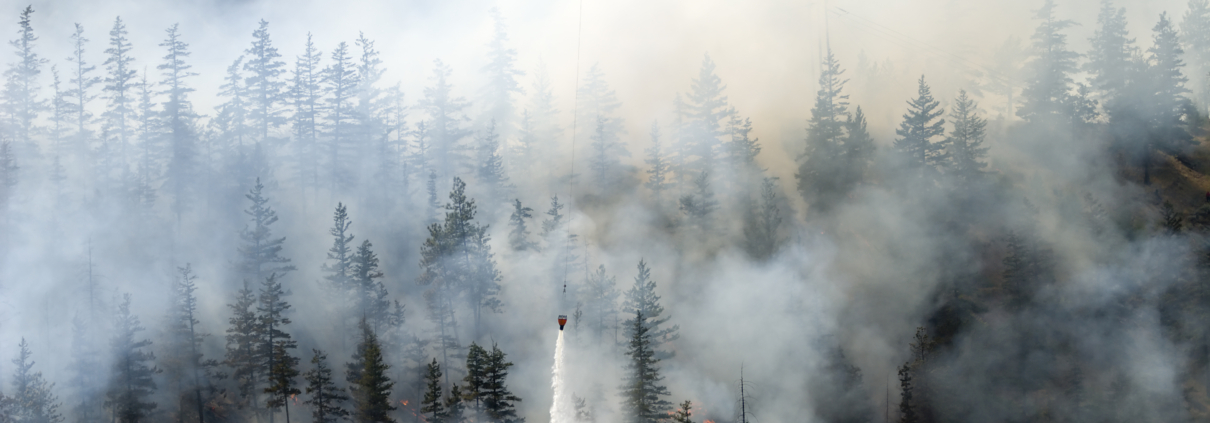New Wildfire Playbook promotes salmon recovery in post-blaze strategy
PSF’s new Wildfire Playbook is a first to offer solutions to help salmon and their habitats recover after wildfires burn in salmon-bearing watersheds.
June 25, 2024
Vancouver, B.C. – As wildfires in British Columbia grow larger and more severe, with 2023 being the worst wildfire season on record, the Pacific Salmon Foundation has released a first-of-its-kind resource aimed at accelerating post-wildfire recovery for salmon and their habitats.
Pacific salmon have historically adapted to naturally-occurring fires in British Columbia, yet the recent surge in wildfire activity has increased negative impacts to salmon beyond the natural range they are adapted to.
In the past, ecological wildfire recovery efforts in British Columbia have not focused on salmon and their habitats due to a lack of existing resources or framework to guide that integration. Meanwhile, wildfires have continued trending upward across the province, including in major salmon-bearing watersheds such as the Columbia, Fraser, and Stikine basins. Since 1986, thousands of fires have burned more than 7.7 million hectares within salmon-bearing watersheds in British Columbia and the Yukon.
With more than half of salmon populations in B.C. in some state of decline in the face of complex issues like climate change, habitat loss, and pollution, the increase in wildfire activity is an added stressor to salmon and their habitats. Wildfires have caused significant negative impacts to salmon and aquatic ecosystems in recent years, such as elevated sediment in streams, landslides, burnt riparian vegetation, and loss of in-stream habitat features.
The Pacific Salmon Foundation (PSF)’s new Wildfire Playbook addresses these challenges and highlights a range of post-wildfire restoration solutions targeted to support salmon and their habitats.
The Playbook also promotes the concept of a ‘watershed recovery community,’ encouraging fisheries and resource managers, rights-holding First Nations entities, other First Nations groups, Crown governments and agencies, stakeholders, consultants, and researchers to work together on wildfire recovery through a collaborative lens.
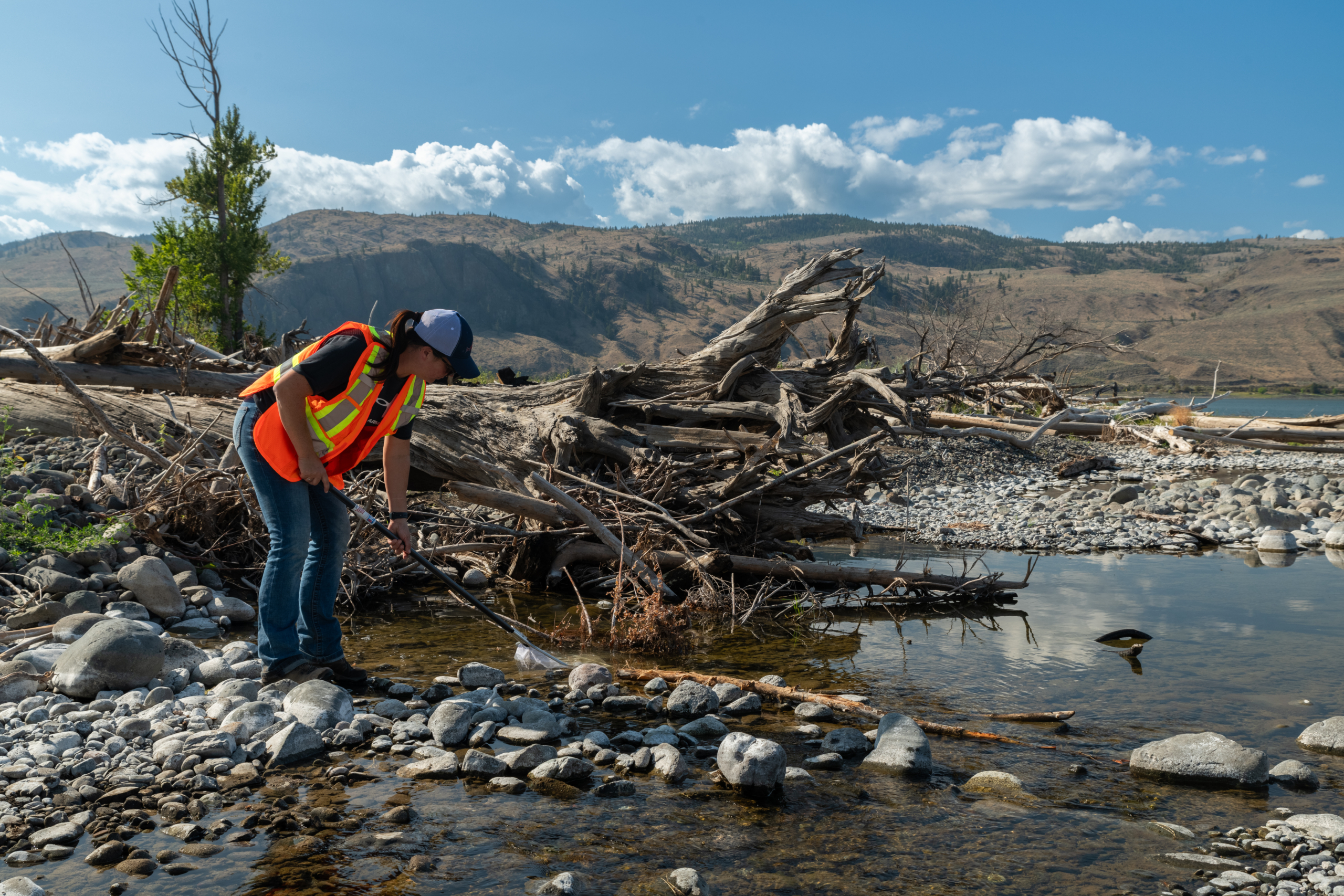
“This Wildfire Playbook is built on the belief that salmon populations are resilient and that through collective effort, we can make meaningful, on-the-ground changes to accelerate the recovery of salmon habitats and populations at watershed scales following wildfires,” says Jason Hwang, Chief Program Officer and Vice President of Salmon, Pacific Salmon Foundation.
“Wildfires can destabilize watersheds with impacts that reverberate for decades. The new Wildfire Playbook provides solutions to support and accelerate recovery efforts for salmon and their habitats. The Playbook is intended to foster collaboration and action, helping salmon populations remain viable and recover after wildfires. Solutions in the Playbook address immediate issues like fish passage and long-term challenges like heightened flows and impacts to stream channels.”
PSF developed the Wildfire Playbook thanks to support from the British Columbia Salmon Restoration and Innovation Fund (BCSRIF) – a joint program from the Government of Canada and the Province of British Columbia.
Solutions for salmon
The Wildfire Playbook, based on long-established approaches to watershed planning, risk management, and habitat restoration, centres salmon in post-wildfire recovery efforts.
The Playbook acts as a toolkit equipped with solutions and mechanisms to mitigate detrimental effects and accelerate recovery for salmon and their habitats, where necessary.
Three types of solutions are defined in the Playbook.
1. Immediate treatments reduce the risk of serious harm to salmon and their habitats in real time, such as removing blockages that stop fish from moving through streams. These solutions may include managing water runoff pathways, restoring habitat connectivity, and protecting salmon from hazardous materials. Specially-engineered debris basins to control run-off and sediment is one example.
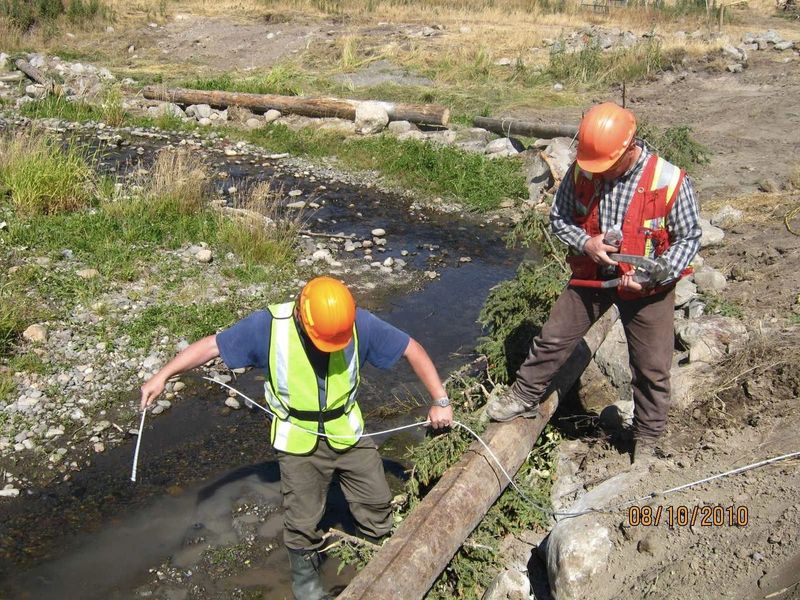
Photo: Wayne Salewski
2. Restoring natural habitat processes, such as returning streams to their natural floodplains, stabilizing soils, and planting vegetation. This means working with nature and aligning recovery efforts with the natural functionality of ecosystems. Some of these treatments are long-term and can take five to six decades to achieve full effect. These treatment types create conditions favorable to habitat recovery, rather than directly improving salmon habitat. Examples include: upland and riparian reforestation to control run-off and erosion and human-made ‘beaver dam analogues’ that mimic natural beaver dams associated with floodplain habitat.
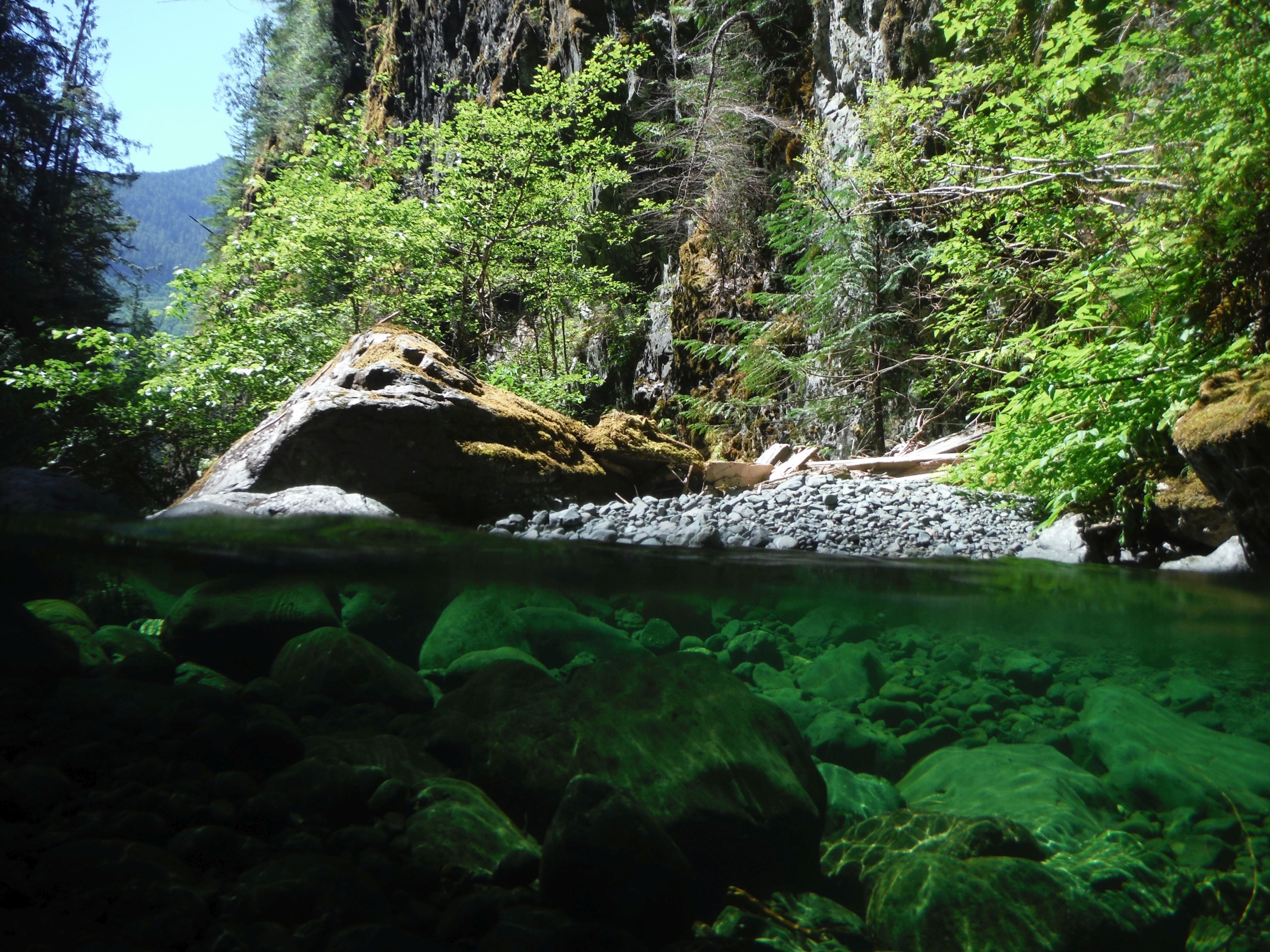
Riparian forests, or streamside trees and vegetation, create resting and feeding areas for salmon, filter out sediment, and reduce erosion. Photo: Ian Redden
3. Speeding up the recovery of stream channels and salmon habitats. This involves adding human-made structures to streams to improve conditions for salmon. Some treatment options include installing weirs, rock steps, grade-control structures, engineered log jams, woody debris, and stabilizing stream banks.
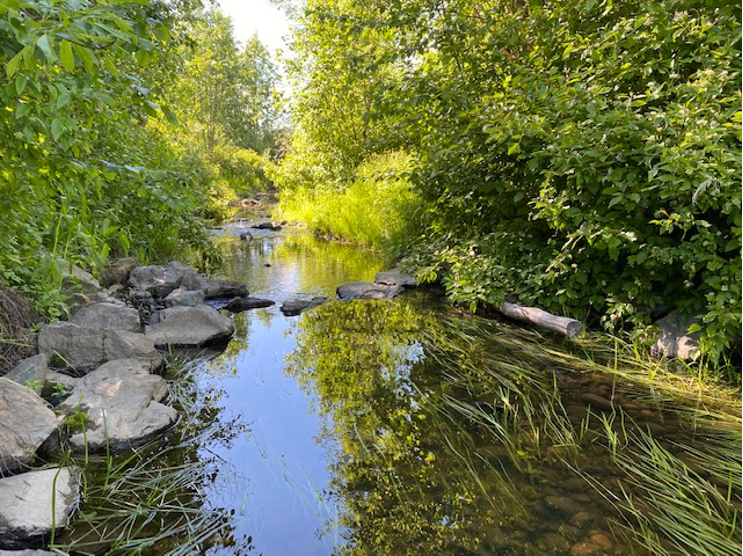
Large boulders placed in streams can increase flow complexity and create cover that benefits salmon. Photo: Wayne Salewski
The Playbook describes more than 40 post-wildfire recovery treatments and includes recommendations for planning, implementation, and monitoring. Ultimately, the Playbook aims to equip restoration specialists and decision makers with tools to take action on salmon and habitat recovery after wildfires.
“After major wildfires, critical salmon habitat can be lost or damaged and wild salmon impacted for years to come. The BCSRIF-funded Wildfire Playbook is an innovative tool to guide landscape recovery for salmon following major fires. The actions we take in saving wild salmon benefit our communities and people who depend on this iconic species,” says Hon. Nathan Cullen, Minister of Water, Land and Resource Stewardship and Minister Responsible for Fisheries.
Visit this webpage to access the Wildfire Playbook and related materials.
Background on Fire and watersheds
Fires are natural to British Columbia. In fact, Pacific salmon have long endured, and even benefitted from fires for millions of years. But the new scale and severity of recent wildfires are challenging the ability of watersheds to naturally recover and support salmon and other aquatic species.
In 2023, wildfires burned a record-breaking 2.8 million hectares in British Columbia, far exceeding the yearly average of 30,000 hectares burned per year in the 1990s.
The 2024 wildfire season is well underway. Active spring wildfires have already burned more than 320,000 hectares as of early-June 2024, more than doubling the total area burned in 2022 alone.
The uptick of wildfires is attributed to climate change, aggressive firefighting, historical fire exclusion, repression of Indigenous cultural burning, and human encroachment in wildlands.
This escalation has raised the stakes for Pacific salmon. The interaction between increasing wildfires and other human disturbances impact fundamental watershed dynamics, thus influencing salmon habitats and their capacity to recover.
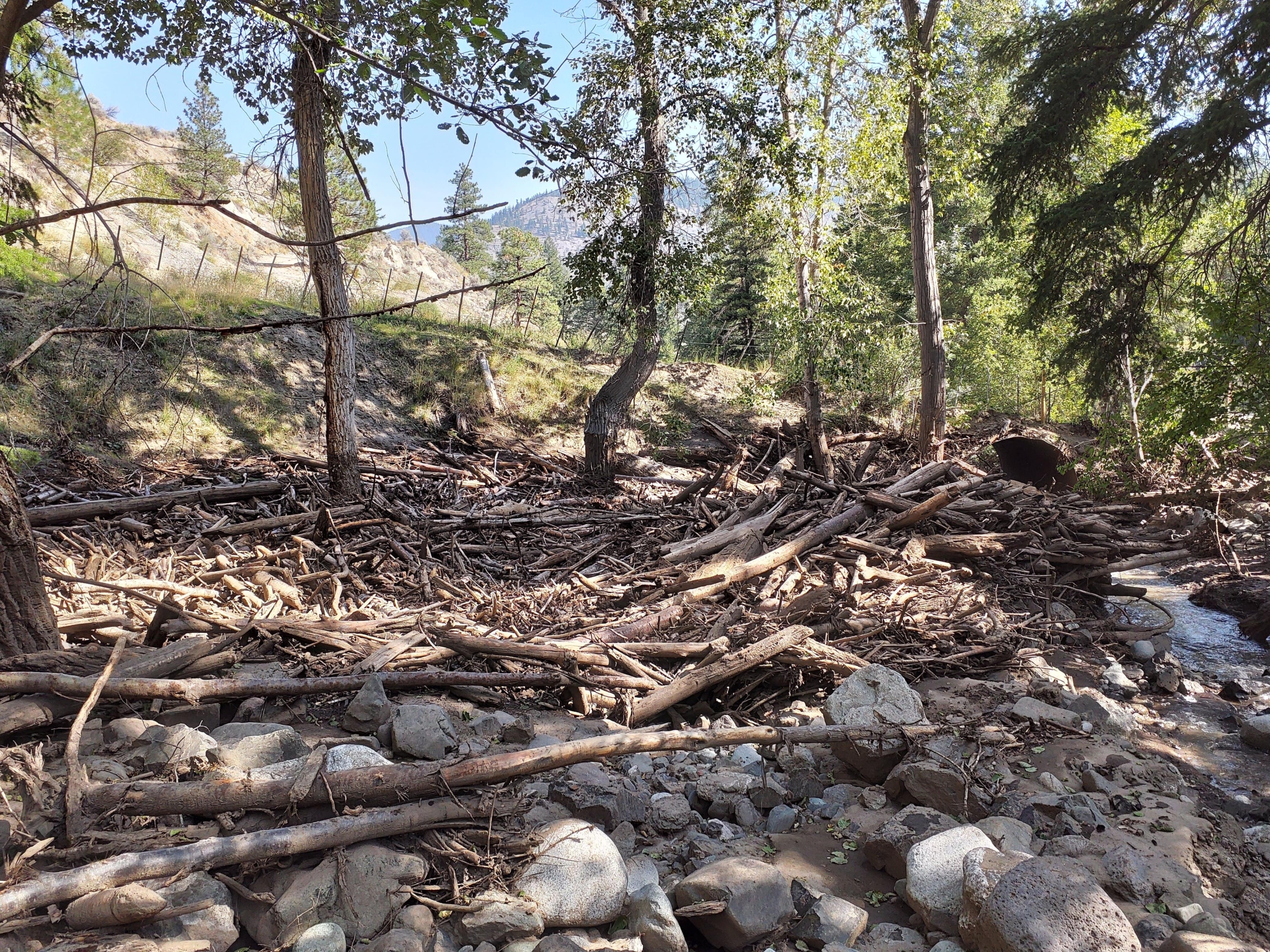
Debris buildup adjacent to a stream after a wildfire.
Wildfires reduce forest cover and vegetation, which can increase stream temperatures, causing heat stress that is particularly harmful to juvenile salmon and returning adults.
They also increase erosion and runoff, which can lead to flooding, debris flows, and sediment buildup, disrupting streambeds and damaging critical salmon habitats.
Additionally, fallen debris can obstruct salmon migration, and contaminants from ash and other pollutants can elevate water pollution, further threatening salmon populations.
Media inquiries: To arrange an interview with an expert or for more information, please contact Braela Kwan at bkwan@psf.ca or 604-664-7664 ext. 1025

